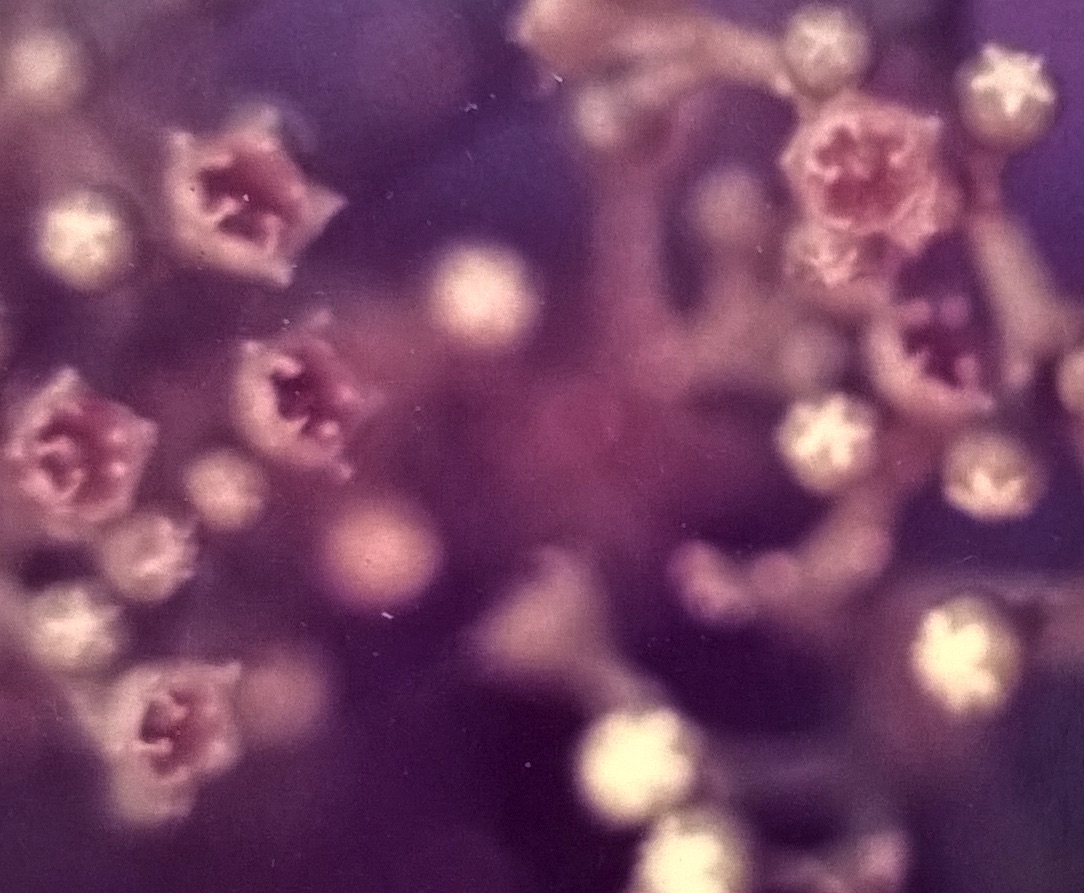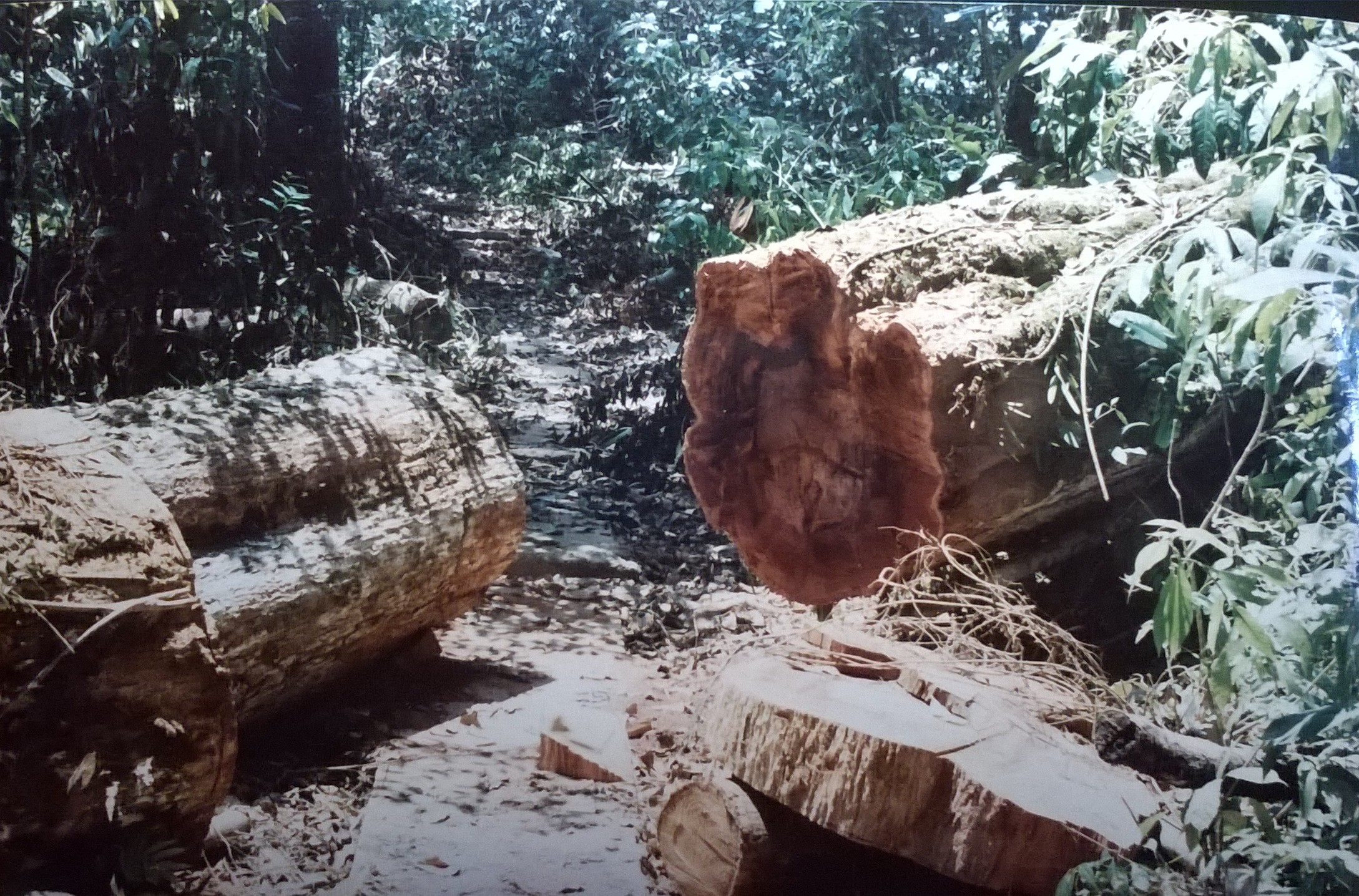Licania operculipetala Standley & L.O.Williams
Chrysobalanaceae CAMARÓN, SAPOTILLO
Tree: Occaisional to locally abundant evergreen canopy or emergent tree (25-35 m) notable for its solid crown, scaly white bark, and reddish, exceedingly hard wood. This very hardy species is found in almost all Manuel Antonio habitats, including the coastal zones, the well-drained ridges and hills, and the bottomlands of the wetter valleys. Majestic in its spectacular height and tremendous bulk, Camarón dominates Manuel Antonio’s arboreal flora. Nevertheless, the tree is of limited distribution, and it is otherwise relatively rare in Costa Rica.
Description: Camarón has a straight, towering and branchless trunk (1.1 m) that is nearly, but not quite, cylindrical in cross section. The roughly textured bark (very characteristic of this species) is white or pale gray, thick, and very scaly, with exfoliation occurring in irregularly shaped plates. If the reddish inner bark is exposed, a strong odor reminiscent of shrimp (or pejivalles) is clearly discernible and this is the source of the tree’s common name. Buttresses are generally not present. Major limbs are thick and angular, and they taper rapidly to the abundant and stiff grayish twigs. A moderately dense layer of dark-green leaves complete a crown that is thick, rounded, and compact – small for a tree of this size. The simple, alternately arranged leaves (13cm by 4.5cm) are very thick, leathery, smooth, and sturdy. Blades are elliptical in shape (though they are usually somewhat curled), ending in stubby drip tips and supported by short petioles (0.5 cm). Late in the year, about half of the foliage fades from green through yellow to brown and is finally shed in late December and January. Simultaneously, new growth appears at the tips of the branches. (Often, these new shoots break off and they can be found on the ground in large numbers).
Growth and leaf emergence continue for two months before ending with the production of large panicles of tiny flower buds (10 cm). Terminally located, these pyramid-shaped panicles are positioned outside of, and slightly above, the rest of the canopy. As they mature, the panicles yellow and begin to bear hundreds of minute (3 mm in diameter) blossoms. Each Camarón flower consists of a five pointed, cup-shaped green calyx; five tiny and delicate white petals; five short, inwardly-curving stamens; and a short, green pistil. The blossoms emit a strong, bread or yeast-like odor that is clearly discernible from the ground beneath these trees. Flowering periods are prolific and highly synchronized, with all trees participating annually for a three week period between mid-February and late March.
Fruits grow rapidly thereafter, but many are aborted during all stages of their five month development. They mature as 4 cm, ovoid, green drupes (resembling small avocados) with a thin layer of flesh surrounding a large, stony seed. When ripe, the fruit is soft and sweet smelling. Harvest begins in the last days of June and continues through the beginning of August. Seeds germinate within two months of fruit fall (typically in September) and the seedlings – using the stored food in the large seed – grow twenty centimeters during their first two weeks of life. The young saplings are easily distinguished from the other vegetation of the forest floor, thanks to the presence of small, linearly arranged dots on the small tree’s leaves.
Similar Species: The best way to recognize sterile Camarón trees is through their emergent size, unique bark characteristics, and abundance. During the months of April through August, look for the round, green (aborted or mature) fruits that litter the ground beneath these trees.
Natural History: Camarón’s myriad flowers are visited by bees and other insects. They can be seen in great numbers from the ground, swarming around the mature and odorous panicles. After the ripe fruits have fallen to the ground, they are much sought after by opossums, agoutis, pacas, and other rodents. Usually, the gnawed-clean seed and discarded shards of the fruit’s skin – frequently seen along trails in the morning – are all that remains of the drupe. Sometimes, the stripped seeds are encountered in clumps on the forest floor, evidence that they were collected and then consumed in one place. Bats may be responsible for such seed distribution patterns, the winged mammals repeatedly returning to specific roots from which to feed on foraged fruits.
Camarón’s minute flower petals are interesting in that they do not remain attached to the flower for long. Instead, they help protect the bud by covering it as it matures and they are shed soon after it opens. The abundance of trees populating certain regions within Manuel Antonio and the millions of flowers present during the flowering season combine to create a continuous drizzle of these tiny petals during March. Dust-like and scaly, they carpet the forest floor with their numbers. The air is also filled with a pungent, sweetish, bread-like fragrance during peak periods of flowering activity.
Uses: The reddish Camarón wood is locally famous for its hardness and density. It is said that sawmills generally reject it as a timber tree because of the difficulty encountered by blades in cutting through Camarón wood. Apparently, some sections of the wood contain deposits of silicate minerals (drawn in through the roots) – literally giving these fibers a rock-hard texture.
Distribution: In Manuel Antonio National Park, Camarón trees are found in all ecosystems, preferring well drained soils to continuously saturated ones. Though one of the most common trees in this park, it is a tree species of very localized and restricted distribution. Endemic to Costa Rica, Camarón is known only from the more humid parts of the Pacific slope – specifically in the area around Palmar Norte, Carara, Punta Leona, and the Osa Peninsula.




